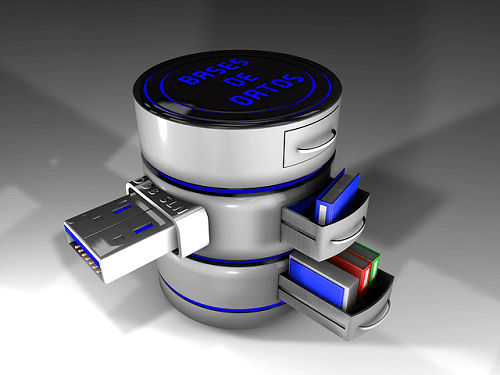Connectivity issues with computers are a common occurrence that may manifest from time to time, posing challenges that, fortunately, can be addressed with relative ease once the underlying problem is identified.
Among the issues that users may encounter are connectivity problems with USB devices, such as pen drives or phones connected via USB cable.
These issues may manifest as messages like ‘device not working’ or ‘USB device not recognized.’ Several factors can contribute to the emergence of these problems.
One potential cause could be the lack of support for a specific USB device by your computer. However, it’s important not to be unduly alarmed, as these issues are typically solvable through straightforward measures.
Dealing with such problems can be frustrating, especially when initial attempts at resolution prove unsuccessful.
To initiate the troubleshooting process, it is crucial to confirm that the necessary USB drivers have been correctly installed on your computer.
Now, let’s explore some methods to address these connectivity issues. As mentioned earlier, some problems can be resolved with relative simplicity, while others may require a more in-depth investigation to find a solution.
Checking The Power
If you find that a device is not working as expected, the initial step is to inspect and ensure the batteries are in proper working condition.
Check the battery compartment for any signs of corrosion or improper connection. Replace the batteries if they are depleted or damaged.
This straightforward measure can often resolve issues related to the power supply of battery-operated USB devices.
By addressing the battery status, you eliminate a potential source of the problem and increase the likelihood of restoring the functionality of the USB device.
Always remember that even seemingly complex issues can sometimes have simple solutions, and thorough examination can lead to effective troubleshooting.
Examine The Device Connection
One of the most straightforward and effective methods to resolve USB connectivity issues is to disconnect and reconnect the USB device.
This simple action can often rectify common problems and restore proper functionality.
To implement this solution, start by disconnecting all peripherals from the computer. Once this is done, proceed to disconnect the problematic USB device.
After a brief pause, reconnect the USB device, ensuring a secure and proper connection.
This method serves to reset the connection and may address issues related to communication between the USB device and the computer.
It is a quick and easy troubleshooting step that proves successful in many cases.
Remember, simplicity can be key in resolving technology issues, and this method exemplifies a practical approach to troubleshooting USB connectivity problems.
Manufacturer Installation
Encountering USB connectivity issues may sometimes be attributed to the absence of essential manufacturer-specific software required for proper functioning.
This scenario is particularly common with certain smartphones that may not operate seamlessly when connected to a computer.
In such cases, it is essential to proactively address the software aspect by ensuring the necessary manufacturer-specific software is installed on your system.
Patience can be pivotal, as some smartphones automatically prompt the user to download and install the required software when connected to a computer. This information is often displayed on the phone.
Wait for the software prompt on your smartphone, follow the instructions provided, and proceed to download and install the required software.
This step is crucial for establishing a proper connection between the USB device and the computer.
By addressing the software component, you contribute to a comprehensive troubleshooting approach, increasing the chances of resolving USB connectivity issues effectively.
Microsoft Support
In case you are not finding the solution to your problem here, you can seek assistance from Microsoft on the Internet. Just visit http://support.microsoft.com/en-in/help/17614/automatically-diagnose-and-fix-windows-usb-problems
You will be asked to download a file that will guide you in fixing the problem.
Update USB Drivers
Another way to fix USB error issues is to update the USB drivers on your computer. You can get these from the Windows Store or you can download them from Google by searching.
When downloading from Google, you should be careful to download the correct bit ie. 32bit or 64bit, before you install the drivers and solve the fixed issue.
You can check the status of the drivers by going to the device manager. Follow the steps below.
- open device manager
- Expand to ‘other devices’
- And then ‘universal serial bus
If you happen to see some drivers that have been marked yellow, those need to be updated ASAP. In case this method does not work, let us look at the next one.
Microsoft System Restore
Maybe the USB device was working perfectly well previously before the issue came in. In this case, you can use the Microsoft system restore facility to solve the issue. Visit this for the Microsoft system restore, http://support.hp.com/in-en/document/c03327545
Conclusion
By carefully following the steps outlined in this article, you can address a range of problems associated with USB devices effectively.
To recap, these solutions include checking the status of batteries for devices that operate on them, disconnecting and reconnecting the USB device after removing peripherals, and ensuring that the necessary manufacturer-specific software is installed for seamless operation.
By systematically applying these methods, you enhance your chances of resolving USB issues without encountering significant difficulties.
Remember to approach the troubleshooting process patiently and systematically, as each step contributes to a thorough examination of potential problems and their solutions.
Feel free to refer back to this article whenever you encounter USB connectivity issues, and you’ll be well-equipped to tackle them with confidence.
Troubleshooting technology concerns can be a rewarding process when approached with a clear understanding of the potential solutions at your disposal.



